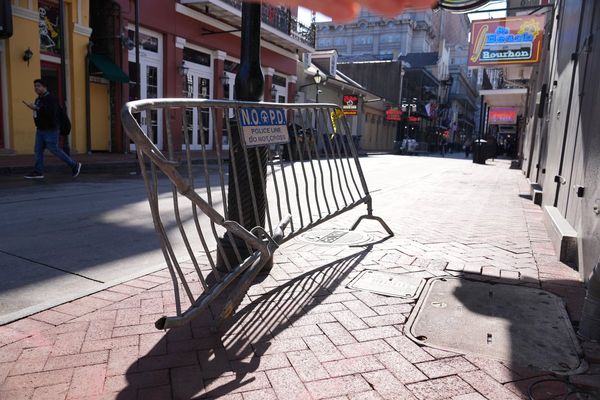
Grenfell, the Post Office, infected blood, Hillsborough … Britain has witnessed a long series of injustices where walls of silence and lies have stopped the powerless inconveniencing the powerful by telling their whole truths. To that list, in the section where further disclosure is still urgently required, we should add the UK’s nuclear testing scandal. This calmly scathing documentary sets out the case.
Post-second world war, the US and the USSR engaged in a nuclear arms race, and Britain – desperate to cling to its place at the world’s top table – felt obliged to join them. As it tried to keep up with developments in atomic and hydrogen bombs, nuclear tests were desired, but letting off nukes anywhere near regular British citizens was politically unviable, so distant lands were sought and human guinea pigs identified.
The locations chosen were Pacific atolls and the Australian outback and coast; the unwitting human test subjects were, as well as the local people, around 39,000 British and Commonwealth servicemen and scientists. Between 1952 and 1963, they witnessed 45 atomic and hydrogen bombs being detonated, along with hundreds of other radioactive experiments. Many of those affected, who had been stationed at the blast sites so the effects on humans could be monitored, are interviewed in this film.
Leading the talking heads are British veterans who, as young men in the 1950s and 60s, were offered the chance to sail halfway around the world to serve their country. Initially, when they arrived at, say, Christmas Island or the Monte Bello archipelago off the coast of north-western Australia, they were in paradise, living a life of sunshine, beer, seafood and beach football with, as one says, “no idea what we were letting ourselves in for”. Now, they live with cancers and other health problems they are convinced are linked to what they experienced – or with the traumatic memories of coming face to face with humanity’s most powerful, awful creation.
Not every study has backed the men’s claims about the negative health impacts of the nuclear tests, but plenty have and, in any case, the problem is that the picture is incomplete. Court cases and dogged freedom of information requests have been required to access records from the Ministry of Defence, the existence of which the MoD had previously denied. But the veterans still wouldn’t have enough to claim for compensation, even if Britain had an equivalent to the nuclear-testing compensation schemes that exist in other countries.
Here and now, we have the men’s own testimony, which is frightening. Their recollection of sitting on a beach with their bare hands over their eyes, waiting for an unholy explosion to go off in the sea behind them, is eerie and nightmarish. One man’s memory of being flown in a plane through a mushroom cloud, looking down at a crimson inferno below before being flipped upside down by the force of the explosion, is hard to even comprehend.
Almost more upsetting are the tales of what came next, particularly among the men’s offspring. Children were born with disabilities and disfigurements; grandchildren show signs of genetic defects. The official line remains that there is no correlation between this and the tests, and that “no information is withheld from veterans”. The veterans, bitterly and tearfully, disagree.
Then there is the small matter of the Indigenous Australians whose ancestral homelands were deemed to be uninhabited before British nuclear tests were carried out. At Emu Field in south Australia in 1953, warnings about the prevailing wind were ignored, and the radioactive cloud was blown towards an Indigenous community that included the late Yami Lester, who was blinded by radiation exposure and became an anti-nuclear campaigner. We hear his famous description, given in 1999, of “this black mist coming over and quietly rolling through the mulga trees, black and shiny, oily looking”. Community members reported unusual, serious health issues within hours.
There is also an interview with Australian air force veteran and whistleblower Avon Hudson, who risked imprisonment to draw attention to the effects of the tests at Maralinga, a little south of Emu Field. Hudson, a resolute but deeply sad man, leads the film-makers to the programme’s starkest image: the cemetery in the small military town of Woomera, with its rows of tiny graves. The surge in infant deaths and stillbirths was never satisfactorily explained.
Hudson fought for a royal commission, which convened in 1984 and went some way to healing the damage done in Australia, but the surviving Brits – now grandfathers, sharp of mind but with faces etched by worry, and with their time running out – are still waiting for a public inquiry, for compensation, and for the release of their own full medical records. Answering their questions honestly looks like the least we can do.
• Britain’s Nuclear Bomb Scandal: Our Story aired on BBC Two and is on iPlayer.







